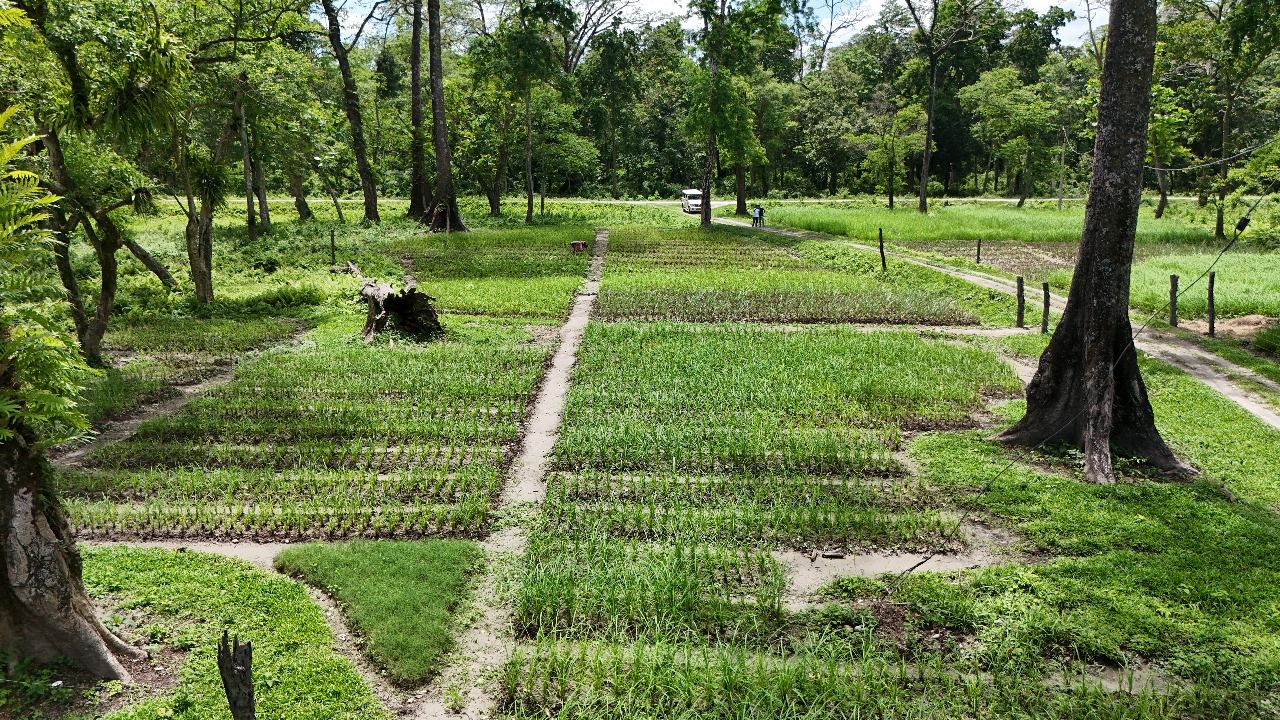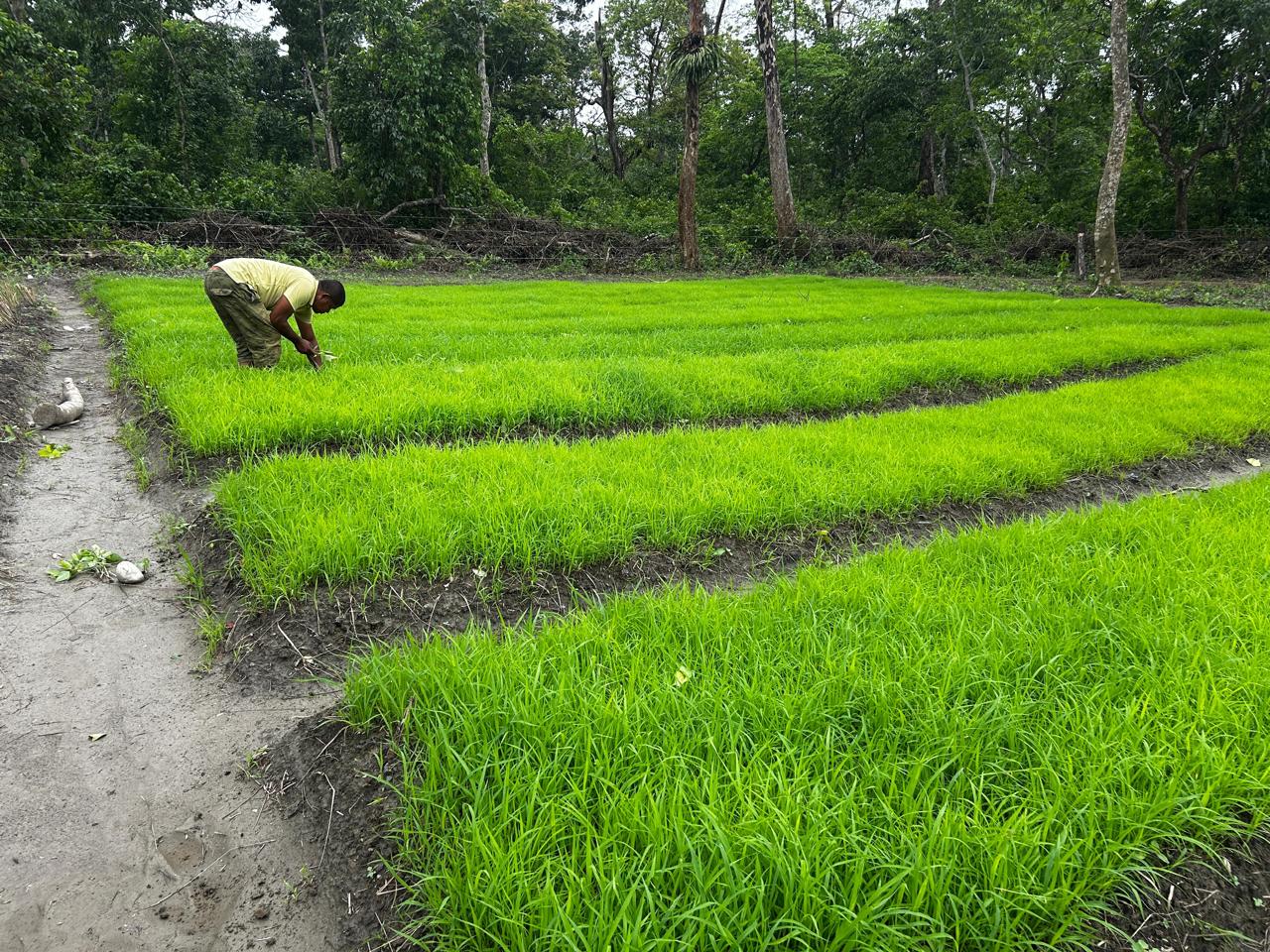In a bid to preserve ecological balance and curb human-wildlife conflict, the Jaldapara Wildlife Division has embarked on an ambitious grassland expansion project spanning 400 hectares of forested terrain. The initiative is aimed at sustaining the growing herbivore population—particularly the endangered one-horned rhinoceros—within Jaldapara National Park.
Recent wildlife surveys have recorded a marked increase in the number of herbivores in the area, including rhinos, elephants, bison, and various deer species. The surge in numbers has intensified the demand for food and water inside the reserve. To address this, the forest department is planting twelve species of grasses and establishing dedicated nurseries across 20 hectares to ensure long-term sustainability.

The grass species being cultivated include Madhuwa, Malsa, Chepti, Maundy Grass, Dhadda, Nal, Bansapatari, Bamboo Khagra, Kashia, Ekra, Purundi, and Hogla—each selected for their palatability and ecological value. Rhinos are especially fond of Madhuwa and Malsa, while elephants prefer Chepti and Dhadda varieties. These grasses are being planted across key zones including Chilapata, Kodalbasti, Nilpara, East and West Jaldapara, North Jaldapara, and Lankapara.
“This time, grass is being planted on 400 hectares under the Jaldapara Wildlife Division,” said Navjit Dey, Assistant Wildlife Warden. “Earlier, we focused mainly on Dhadda and Chepti, but now, a much more diverse selection of grasses is being introduced. We’ve also established nurseries to ensure consistent supply and regeneration.”
Also read: 25 killed in 4 months as elephants storm north Bengal villages
The creation of grass nurseries at 14 to 16 locations within the reserve marks a significant step forward. These nurseries are essential for cultivating and maintaining a steady forage supply, particularly during dry months when natural vegetation becomes scarce.

Praveen Kashoyan, Divisional Forest Officer (DFO) of Jaldapara Wildlife Division, underlined the ecological importance of the initiative. “The increase in herbivore numbers is a positive indicator of our conservation success. However, it also means we must intensify our efforts to provide adequate food and water. Ensuring that animals find what they need within the forest will naturally reduce their movement towards human settlements,” he said.
Experts note that food scarcity is a primary driver of wildlife movement outside protected areas, leading to conflict with neighbouring communities. By expanding grasslands and securing in-park resources, the forest department aims to reduce such confrontations while fortifying the reserve’s ecosystem.
This eco-restoration project is more than a grass-growing initiative—it is an effort to restore harmony in a thriving but fragile wildlife habitat. It serves as a reminder that nature, when supported by thoughtful human intervention, can coexist with development.
With the onset of the monsoon season, plantation efforts are expected to ramp up. Forest officials remain hopeful that the Jaldapara model will inspire similar conservation practices in wildlife reserves across India.



